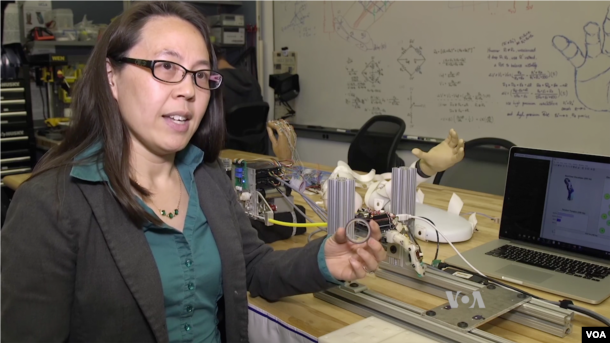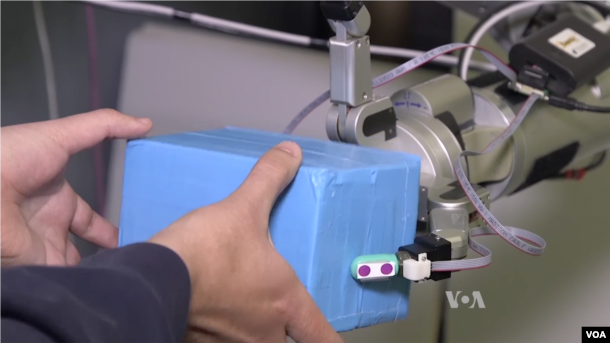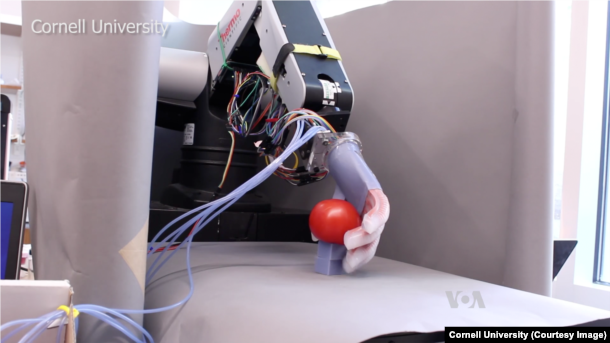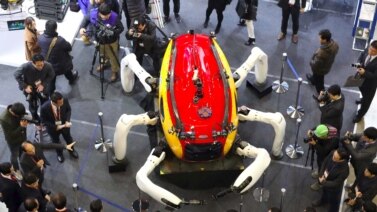A human hand can find a tool without looking, or put down a glass of water without spilling.
But for robots, these actions are harder than they seem. That is because using a hand requires a sense of touch.
Veronica Santos leads the Biomechatronics Lab at the University of California, Los Angeles.

"So, for example, how hard am I squeezing this object? What forces are required at my fingertips so that I can do these very fine dexterous manipulations of handheld objects?"
Santos and researchers are designing robot hands that do not just hold things. The robot hands can also feel when to let go, says Kenny Gutierrez, a graduate student.

"It's waiting for contact with the table before it decides to let go of the box."
The researchers have created a mechanical finger that senses many of the same things human fingers do. Santos says the device is equipped with a sensor that provides information about what the fingertip is touching. The information can include the object’s temperature, internal fluid pressure and movement.
Making robots more gentle and sensitive to touch is a popular research area. Engineers at New York’s Cornell University, for example, built a robot that can identify when a tomato is fully grown.

Its sense of touch comes from light shining through its clear rubber skin.
Cornell engineering professor Robert Shepherd says this technology costs less than high-tech electronic skin.
Scientists at China's Harbin Institute of Technology have made artificial skin with electronic hairs that feel pressure much like human hairs do. It can feel something as soft as a tissue.
Researchers are now working to add a sense of touch to artificial arms and legs.
I’m Jill Robbins.
Arturo Martinez and Steve Baragona reported this story for VOANews.com. George Grow adapted their report for Learning English. Ashley Thompson was the editor.
Now it's your turn. What do you think about these robots that can sense through touch? Have you ever used a robot at work or school? Write to us in the Comments section or on our Facebook page.
Words in This Story
squeezing - v. to force or create pressure, especially on opposite sides
fingertip - n. the end of a finger
dexterous - adj. done with mental or physical skill
manipulation - n. the act of operating skillfully; the act of operating, using of moving something
table - n. a piece of furniture with a flat surface and usually four legs


